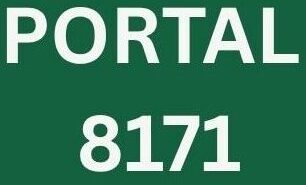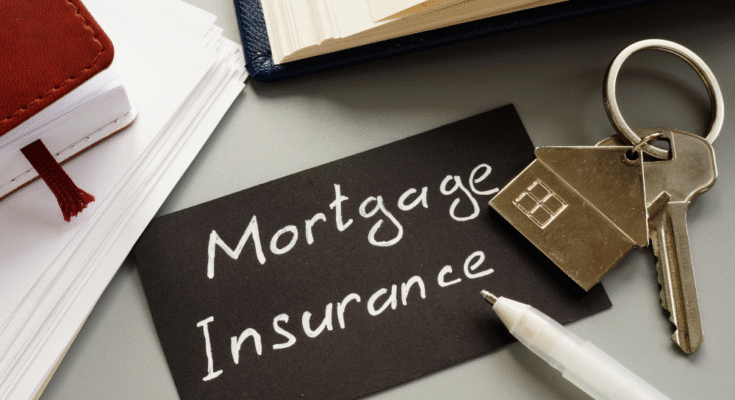Mortgage Loans 101: Purchasing your first home is an exciting milestone, but navigating the world of mortgage loans can feel overwhelming. Understanding the basics of mortgage loans is essential for first-time homebuyers to make informed decisions and secure the best possible financing. This comprehensive guide to Mortgage Loans 101 will walk you through everything you need to know, from loan types to qualification criteria, interest rates, and tips for a smooth homebuying process. Whether you’re just starting your journey or ready to apply, this article will equip you with the knowledge to confidently approach mortgage loans.
What Is a Mortgage Loan?
A mortgage loan is a type of loan used to purchase a home or property. It is secured by the property itself, meaning the lender can take possession of the home (through foreclosure) if the borrower fails to repay the loan. Mortgages are typically paid back over a long period, often 15 to 30 years, through monthly payments that include principal, interest, taxes, and insurance (often referred to as PITI).
For first-time homebuyers, understanding how mortgage loans work is critical. The process involves choosing the right loan type, securing favorable terms, and managing payments to build equity over time. Let’s dive into the key components of mortgage loans to help you get started.
Types of Mortgage Loans
There are several types of mortgage loans available, each designed to meet different financial needs and circumstances. Here’s an overview of the most common options for first-time homebuyers:
1. Conventional Loans
Conventional loans are not backed by the government and are offered by private lenders like banks or credit unions. They typically require a higher credit score (often 620 or above) and a down payment of at least 3% to 20%. These loans are ideal for buyers with strong credit and stable finances.
- Pros: Flexible terms, competitive interest rates, no mortgage insurance with a 20% down payment.
- Cons: Stricter qualification criteria, higher down payment requirements compared to government-backed loans.
2. FHA Loans
FHA loans, insured by the Federal Housing Administration, are popular among first-time homebuyers due to their lenient requirements. They allow down payments as low as 3.5% and credit scores as low as 580 (or 500 with a 10% down payment).
- Pros: Lower credit score requirements, low down payment, accessible for first-time buyers.
- Cons: Requires mortgage insurance premiums (MIP), which increase monthly payments.
3. VA Loans
VA loans, backed by the Department of Veterans Affairs, are available to eligible veterans, active-duty service members, and surviving spouses. These loans often require no down payment and no private mortgage insurance (PMI).
- Pros: No down payment, no PMI, competitive interest rates.
- Cons: Limited to eligible veterans and spouses, funding fee required.
4. USDA Loans
USDA loans, backed by the U.S. Department of Agriculture, are designed for buyers in rural or suburban areas with low to moderate incomes. They offer no down payment and low interest rates.
- Pros: No down payment, affordable for low-income buyers.
- Cons: Geographic and income restrictions apply, requires mortgage insurance.
5. Adjustable-Rate Mortgages (ARMs)
ARMs have interest rates that adjust periodically based on market conditions, typically starting lower than fixed-rate mortgages. They’re suitable for buyers who plan to sell or refinance before the rate adjusts.
- Pros: Lower initial rates, potential savings in the short term.
- Cons: Rates can increase significantly, leading to higher payments.
Key Mortgage Terms to Understand
Before applying for a mortgage, familiarize yourself with these essential terms:
- Principal: The amount borrowed to purchase the home.
- Interest Rate: The cost of borrowing, expressed as a percentage.
- Down Payment: The upfront payment made toward the home’s purchase price.
- Loan Term: The length of time to repay the loan (e.g., 15, 20, or 30 years).
- Private Mortgage Insurance (PMI): Insurance required for conventional loans with less than 20% down payment.
- Escrow: An account holding funds for taxes and insurance, included in monthly payments.
- Closing Costs: Fees paid at the end of the homebuying process, typically 2-5% of the loan amount.
Understanding these terms will help you compare loan options and avoid surprises during the process.
How to Qualify for a Mortgage Loan
Lenders evaluate several factors to determine your eligibility for a mortgage. Here’s what you need to qualify:
1. Credit Score
Your credit score plays a significant role in loan approval and interest rates. A higher score (700+) can secure better terms. FHA loans may accept scores as low as 580, but improving your score before applying can save you thousands over the loan term.
- Tip: Check your credit report for errors and pay down debts to boost your score.
2. Debt-to-Income Ratio (DTI)
Your DTI compares your monthly debt payments to your gross income. Most lenders prefer a DTI below 43%, with 36% or lower being ideal.
- Tip: Pay off high-interest debts, like credit cards, to lower your DTI.
3. Down Payment
The down payment varies by loan type. Conventional loans may require 3-20%, while FHA loans require 3.5%, and VA/USDA loans may require none.
- Tip: Save for a larger down payment to reduce monthly payments and avoid PMI.
4. Employment and Income
Lenders want proof of stable income, typically requiring two years of employment history. Self-employed borrowers may need additional documentation, like tax returns.
- Tip: Avoid changing jobs during the homebuying process to maintain lender confidence.
5. Loan-to-Value Ratio (LTV)
The LTV compares the loan amount to the home’s appraised value. A lower LTV (e.g., 80% or less) is favorable and may eliminate the need for PMI.
- Tip: Get pre-approved to understand your borrowing power and set a realistic budget.
Fixed-Rate vs. Adjustable-Rate Mortgages
Choosing between a fixed-rate and adjustable-rate mortgage is a critical decision:
- Fixed-Rate Mortgages: Offer consistent monthly payments with a set interest rate. Ideal for buyers planning to stay in their home long-term.
- Adjustable-Rate Mortgages (ARMs): Start with a lower rate that adjusts after a set period (e.g., 5 years). Suitable for short-term homeowners but riskier due to potential rate increases.
For first-time buyers, fixed-rate mortgages are often safer, providing predictability in budgeting.
Steps to Get a Mortgage Loan
Follow these steps to secure a mortgage as a first-time homebuyer:
- Assess Your Finances: Review your credit score, savings, and monthly budget to determine affordability.
- Get Pre-Approved: A pre-approval letter from a lender shows sellers you’re serious and helps set your budget.
- Shop for Lenders: Compare rates, fees, and terms from multiple lenders to find the best deal.
- Choose a Loan Type: Select a loan that aligns with your financial situation and homebuying goals.
- Submit an Application: Provide documentation, including income, assets, and credit history.
- Home Appraisal and Underwriting: The lender appraises the property and reviews your application.
- Close the Loan: Sign paperwork, pay closing costs, and receive the keys to your new home.
Tips for First-Time Homebuyers
- Start Saving Early: Save for a down payment, closing costs, and an emergency fund.
- Research First-Time Buyer Programs: Many states offer grants or low-interest loans for first-time buyers.
- Work with a Real Estate Agent: An experienced agent can guide you through the process and negotiate on your behalf.
- Understand Total Costs: Factor in taxes, insurance, and maintenance when budgeting.
- Avoid New Debt: Don’t take on new loans or credit card debt during the mortgage process.
Common Mistakes to Avoid
- Skipping Pre-Approval: Without pre-approval, you may waste time looking at homes outside your budget.
- Ignoring Total Costs: Focusing only on the monthly payment can lead to financial strain.
- Not Shopping Around: Failing to compare lenders may result in higher rates or fees.
- Overextending Your Budget: Buying a home at the top of your budget can limit financial flexibility.
How to Find the Best Mortgage Rates
To secure the best mortgage rates in 2025:
- Improve Your Credit: Pay bills on time and reduce debt to boost your score.
- Shop Multiple Lenders: Compare at least three lenders to find the lowest rates and fees.
- Consider Points: Paying discount points upfront can lower your interest rate.
- Lock in Rates: If rates are favorable, lock them in to protect against increases during the loan process.
The Role of Mortgage Insurance
If your down payment is less than 20%, you may need mortgage insurance (PMI for conventional loans or MIP for FHA loans). This protects the lender in case of default but increases your monthly payments. PMI can often be canceled once you reach 20% equity, while MIP may be required for the life of an FHA loan unless refinanced.
Preparing for Homeownership
Owning a home is a long-term commitment. Build an emergency fund for unexpected repairs, budget for ongoing costs like property taxes, and plan for future financial goals. Regularly review your mortgage terms and consider refinancing if rates drop or your financial situation improves.
Conclusion
Navigating mortgage loans as a first-time homebuyer doesn’t have to be daunting. By understanding loan types, qualification criteria, and the homebuying process, you can make confident decisions that align with your financial goals. Start by assessing your finances, exploring loan options, and comparing lenders to secure the best terms. With the right preparation, you’ll be well on your way to owning your dream home.




